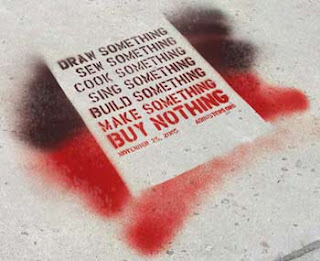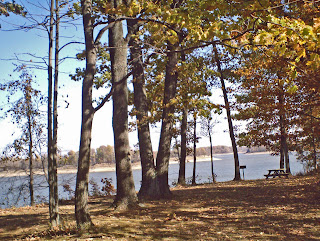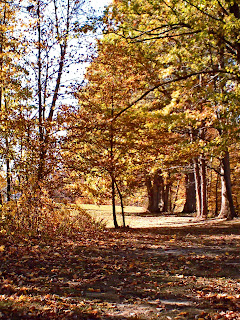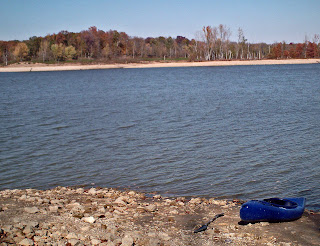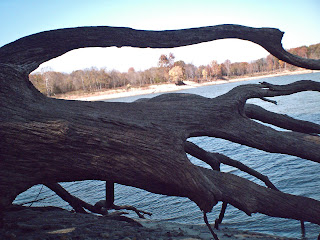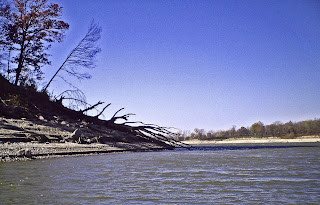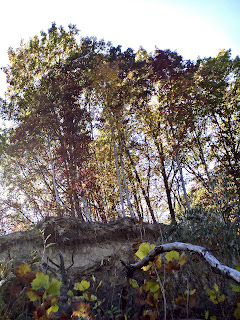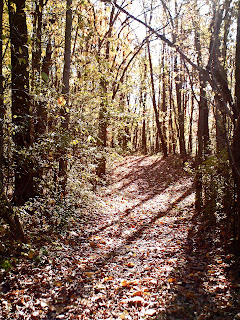This is Great Jukai, the most sacred of Buddhist ceremonies that a lay practitioner will ever participate in, it only happens every three years, and the hell realm is just the beginning. I have been a member of the Rochester Zen Center for almost six years, and so this is only my second time participating in a Great Jukai ceremony.
Unfortunately, the suffering in the next realm, that of hungry ghosts and thirsty spirits, was not less than that of the hell realm, just different. Gloved hands reached out of the walls, grabbing for my legs; starved beings seemed to moan from every direction; the blank and empty gaze of addicts penetrated into my awareness.
“How are you doing, Laura?” Frank asked. “Are you ready to move on?”
I inhaled, looked around, hearing the sounds of gunshots and screeching, and nodded. I knew what came next; this was no time to be timid.
“The deva realm means any existence of comfort or privilege or pleasure, such as being wealthy, beautiful or admired-- when everything is going so well, when there is so much comfort and adoration, it can be more difficult to see into the impermanent nature of things,” said Roshi.
“So, great, you reach a deva realm, you become a wealthy financier of some sort who has houses in the Hamptons and Miami and so forth, and there is then little incentive usually to practice [meditation]. I haven’t heard of people in these kind of deva realms who practice with the rigor of the dharma. It’s true that when you’re in pain, when you’re in a hellish realm, there is more dukkha, more dissatisfaction, more motivation to try to get out of that, to transcend that, but when you’re adrift in pleasure, well, eventually, that becomes hell too.”
After moving through the misty rose light, clouds, and beautiful beings floating in the deva realm, we exited the covered walkway. We stood outside the Buddha Hall under the echoing crisp winter sky. A stone Buddha just sat in the garden, steady and patient and still.
Kanzeon, praise to Buddha, All are one with Buddha, all awake to Buddha, the voices of all people joined into one voice, Buddha, Dharma, Sangha, Eternal, joyous, selfless, pure, and it was so easy to feel that way as the chant continued and I slowly, one step at a time, waiting, chanting, being, listening, This moment arises from mind, this moment itself is mind.
Jukai is formed from two Japanese words, ju (which means both to give and to receive) and kai (which means precepts).
“The precepts are the morality leg of the tripod of what we call the three essentials of the practice of Buddhism-- the precepts (or morality), meditation (what we call zazen), and wisdom (or prajna),” continued Roshi. “I see upholding the precepts as a way to stop hurting other people and oneself.”
“This goes more to the core of it than looking at morality in terms of right and wrong. Right and wrong I see as just an overlay, a western religious overlay. You don’t need to frame things in terms of right and wrong, all you have to know is whether it causes suffering or not.”
“This is not just a technical, semantic difference-- the right and wrong thing is a judgment that doesn’t need to be there-- it has an absolutist quality to it. We don’t need to go that far. We just need to know whether an action or speech, both of which originate out of thoughts, whether these things cause suffering or not.”
“Giving and receiving are two sides of the same coin-- if you are really giving with a full heart, then you are always receiving-- you cannot give without receiving if the giving is pure, genuine and sincere-- the giving and receiving are like the breath. So, technically, you could say that student who goes to the Jukai ceremony is receiving the precepts, but they are also very much giving to me as the teacher by being able to, in this formal way, usher themselves into the Buddha’s family.”
After everyone had gone to the altar and made their way around to their seat, we sat together in silence before Roshi ascended into the Buddha Hall and prostrated before the altar. After he had taken his seat, the quietude settled around us before the voice of Roshi, gentle and low, introduced the Repentance Gatta:
“We ask the Buddhas and bodhisattvas, who have realized enlightenment, to have compassion for us, to help free us from obstructive suffering, the legacy of our past lives, and to help us share in the merit power that fills the countless worlds. The Buddhas and bodhisattvas in the past were like us, and we will in the future become Buddhas and bodhisattvas,” a gentle reminder of our origins, attachments, and the potential that grows from them.
And then, with one voice, almost one hundred people said together: “All evil actions committed by me since time immemorial, stemming from greed, anger and delusion, arising from body, speech and mind, I now repent having committed.” It is said 9 times in all, deeper each time, and there were tears on my face by the fifth. The air seemed to shine when we again fell into an awakened silence.
Following the repentance, the klesa papers were burned ceremoniously in a metal urn. The flickering of the flames shone off of our faces, and the heavy smell of smoke hung for only a minute before dispersing, lightened, towards the full moon shining in through the windows.
“All of this is a way to embody the meaning of all of this,” said Roshi. “It’s one thing to think about and to talk about it, but to enact it through this drama of picking up the paper, going through the tunnel, ascending into the Buddha Hall, doing a prostration, putting the paper in the bowl and seeing and hearing the paper burn is very dramatic in the silence of the Buddha Hall.”
Next, we recited the 16 precepts that lay practitioners of Buddhism vow to live in accordance with. “The taking of the precepts themselves is another way of embodying them,” said Roshi. “When you have to articulate them, you engage the lips and the tongue and the throat and the larynx and so forth; when you have to engage all of these aspects physically, then it goes deeper than by just thinking about it.”
We say all 16 of the precepts three times each, the energy of compassion and dedication pulsing tangibly in the air. “We do it three times each to hammer it in deeper each time,” said Roshi. “Hopefully by the third time there will be some deeper attention being brought to it.”
The ceremony ends with the Return of Merit. The lead chanter sounds the echoing toned kesu, a large low ringing bowl-shaped bell, while chanting deeply, Homage to all Buddhas and Bodhissatvas. Homage to the living Buddha in the ten directions. Homage to the living dharma in the ten directions. Homage to the living sangha in the ten directions. Buddhas and dharma ancestors have opened wide the gates of compassion; We enter the Buddha’s family. We now return the merit of out efforts to all beings in the ten directions. May all beings attain Buddhahood.
The Return of Merit is a grounding reminder that we take these vows not so that we can feel proud of being such good, moral people, but in order to avoid causing unnecessary suffering in the lives of all beings.
We walked back down the stairs, lighter and different than when we had entered an hour earlier, smiling and loving each other. Frank and I didn’t talk as we put our shoes and jackets back on. Outside in the cold air, we exchanged hugs and laughter with the dozens of glowing people standing in the clear western New York night.
I walked down the curving brick walkway of the garden back to the main building of the Zen Center. I had a cup of tea and a gallon of conversation before I headed towards bed.
It was in this iridescently changing light that I saw the deer. He was dead and strapped to the top of a brown Grand Cherokee. Although his legs were bound together, his head was nodding and bouncing in the rush of wind that flowed over the vehicle moving at 70 mph. His tongue was sticking out, and it flapped at me hauntingly as I passed.
I thought about what the deer’s last few moments must have been like, and contemplated the desperation for survival that pervades the animal realm. I felt the desire to chant, and remembered that I had recorded the previous night’s ceremony.
I plugged my digital recorder into my radio transmitter, and the sounds of the Ten Verse Kannon Sutra swelled through my car’s speakers. I chanted along, hoping to ease the pain of myself, the deer, the hunter, and all beings.
“The Buddha is quoted famously as saying, ‘I teach but two things, suffering and the end of suffering,’” Roshi said. It seemed to me, then and there at 8:00 am on the Pennsylvania Turnpike, dead deer in rearview mirror and chanting in my ears and throat, that that is all that the entire world is ever teaching us.
At one point, in between chants when nothing was being said, I realized that what I was not hearing through the silence of my volume turned all the way up was the sound of yesterday’s defilements crackling as they burned.
I was driving home from my visit home, and I felt at home as I moved at 72 mph down the sun-shadowed highway.

